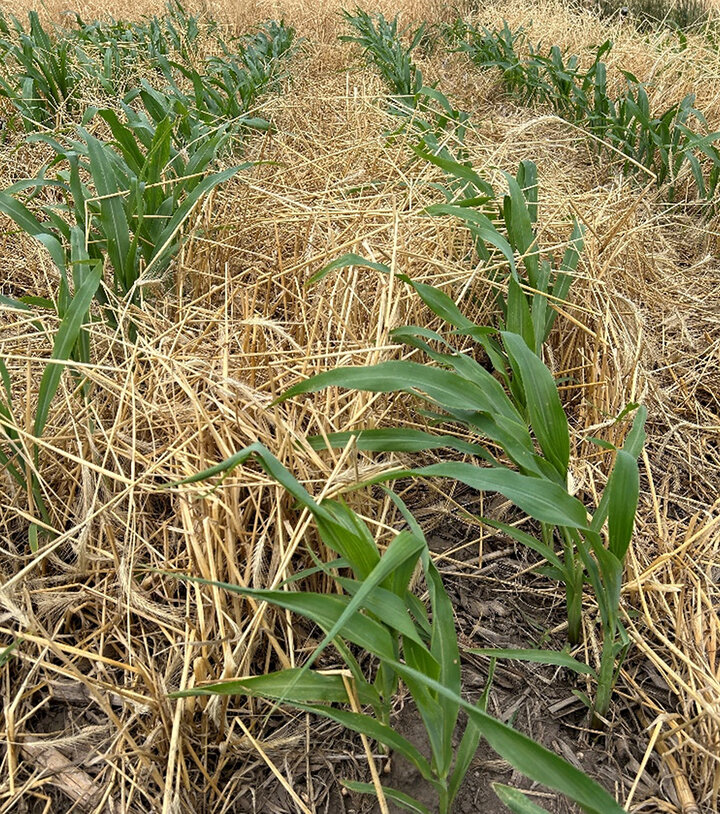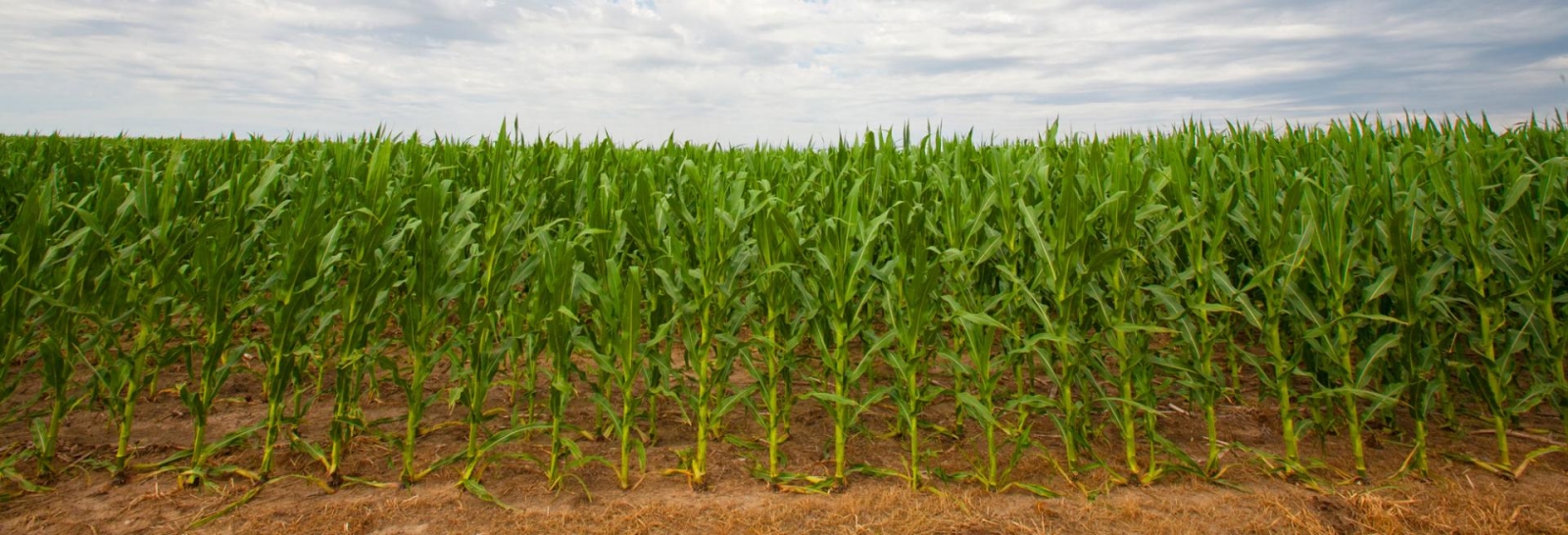Key Takeaways
Herbicide-resistant weeds are escalating in Nebraska, threatening the profitability and sustainability of corn, soybean and sugarbeet systems.
Multiple herbicide-resistant weed species are becoming more common, significantly limiting post-emergence control options and driving up management costs.
While stacked-trait crops (e.g., dicamba-, glufosinate-, or 2,4-D-resistant) can offer short-term control, over-reliance without diversification increases the risk of resistance.
Integrated Weed Management (IWM) is essential for long-term control. With resistance outpacing herbicide innovation, growers must combine chemical, cultural, mechanical, and biological tactics to stay ahead.
Ten key IWM strategies include: diversifying herbicide modes of action, using overlapping residuals, rotating crops, incorporating cover crops, increasing crop competitiveness, using occasional tillage, scouting frequently, tailoring tactics by weed species, consulting experts, and cleaning equipment between fields.
Herbicide-resistant weeds are a growing threat to the sustainability and profitability of agronomic cropping systems in Nebraska, from corn and soybean production fields in eastern Nebraska to sugarbeet in Nebraska Panhandle. With increased herbicide use — particularly in simplified weed control programs — more weed species are evolving resistance to herbicides, creating challenges for farmers.
Herbicide-Resistant Weeds in Nebraska and in the Midwest
In Nebraska and across the Midwest, herbicide-resistant Palmer amaranth, waterhemp, kochia, common ragweed and marestail are common. Many of these species are resistant to widely used herbicides, including atrazine (Group 5), glyphosate (Group 9), protoporphyrinogen oxidase (PPO)-inhibitors (Group 14), and acetolactate synthase (ALS)-inhibitors (Group 2). In fact, nine weed species in Nebraska have confirmed resistance to one or more herbicides: common ragweed, giant ragweed, Johnsongrass, kochia, marestail, Palmer amaranth, redroot pigweed, shattercane, and waterhemp (Jhala 2017). Some populations, particularly Palmer amaranth and waterhemp are resistant to five or more herbicides with varying mode of action (MOA), including groups 2, 5, 6, 9, 14 and 27. This significantly reduces post-emergence herbicide options and forces farmers to rely on alternate herbicide programs.
The evolution of resistance is accelerated by repeated use of the same herbicide(s) with the same mode of action, especially when they are used without incorporating cultural or mechanical weed control tactics. The overuse of glyphosate in glyphosate-resistant crops has been a major driver of the evolution of glyphosate-resistant weeds. For example, six glyphosate-resistant weeds — including common ragweed, giant ragweed, kochia, marestail, Palmer amaranth and waterhemp — have been confirmed in Nebraska (Jhala 2017).
The evolution of multiple herbicide-resistant weeds has become one of the most pressing concerns. Certain weeds survive herbicides belonging to two or more MOAs, making chemical control alone ineffective in many cases.
Moreover, stacked herbicide-resistant traits (e.g., dicamba, 2,4-D, glufosinate) offer temporary control benefits but can also drive resistance if not integrated with diverse weed management strategies. For example, 2-4-D resistant Palmer amaranth has been confirmed in Kansas (Shyam et al. 2022) and glufosinate-resistant Palmer amaranth has been confirmed in Arkansas (Priess et al. 2022).
Why Herbicide Resistant Weeds Matter?
The consequences of the evolution and widespread occurrence of herbicide-resistant weeds are both economic and agronomic. Farmers face increased production costs due to the need for more complex and expensive herbicide programs, additional passes across the field, and potential yield losses from early-season weed competition. Uncontrolled weeds can create problem with harvest operation.
Moreover, resistance is narrowing the window for effective weed control. Palmer amaranth, for instance, can grow about 2 inches per day under ideal conditions and quickly become unmanageable if not controlled early (before they reach 6 inches tall). Even small populations left uncontrolled can contribute hundreds of thousands of seeds to the seed bank, setting the stage for worse infestations in the following years. Thus, herbicide resistance is a double threat: it reduces herbicide efficacy and increases management costs.
Building a Strong Weed Management System
One of the key messages from literature, echoed by research at UNL, is that diversity is essential in weed control. Sole reliance on chemical is not sustainable. Instead, farmers are encouraged to adopt integrated weed management (IWM) systems that combine chemical, cultural, mechanical and biological tactics.
10 Key IWM Strategies for Nebraska Farmers
- Diversify Herbicide Modes of Action
- Rotate and tank mix herbicides with different modes of action. Always refer to herbicide labels to identify mode of action and avoid repeated use of the same group of herbicides in the same field year after year.
- Use overlapping residuals
- Apply soil-applied (residual) herbicides at planting and follow-up with additional residual herbicide to extend control. Using overlapping residuals early in the season can also reduce late-emerging weeds, especially weeds which have season-long emergence like Palmer amaranth and waterhemp.
- Rotate Crops and Traits
- Crop rotation provides more flexibility in herbicide choice. For example, corn–soybean rotation allows the use of Group 1 herbicides post-emergence in soybean to control volunteer corn. Avoid rotating between different corn traits (e.g., Roundup Ready to LibertyLink or Enlist) without changing the weed control strategy. Always double-check that your crop carries the appropriate herbicide-resistant trait before making any post-emergence herbicide application.
- Incorporate Cover Crops
- Research from Nebraska and other states shows that cereal rye and other winter cover crops can suppress weed emergence through shading, allelopathy and residue cover. Planting green, terminating the cover crop after crop planting, can further enhance biomass and weed suppression potential.
- Increase Crop Competitiveness
- Increasing crop competitiveness by narrowing rows or using vigorous hybrids can reduce weed establishment through competition for light, nutrients and space.
- Mechanical Control and Timely Tillage
- In some systems, occasional tillage — also known as strategic tillage — may help reset the weed seedbank. Harvest weed seed control and inter-row cultivation are also valuable tools in select systems.
- Scout Frequently and Adjust Accordingly
- Monitoring fields for escapes is critical. Early identification of resistance can prevent widespread seedbank replenishment and help adjust the management plan in real time. Document herbicide failures and adjust management plans accordingly.
- Tailored Approaches Based on Weed Species
- Not all weed species behave the same. For instance, small-seeded weed species like Palmer amaranth are sensitive to light interception, while larger-seeded weeds (e.g., velvetleaf or morning glory) may still emerge through mulch or residue.
- Consult with Extension and Industry Experts
- Consult with agronomists and extension specialists to design customized integrated weed management programs. Also participate in resistance surveys and send suspicious samples for testing to help researchers and extension better understand resistance dynamics in the region.
- Clean Equipment Between Fields
- Herbicide-resistant weed seeds can easily hitch a ride on farm machinery, including combines, tillage tools and planters. Failing to clean equipment between fields may unintentionally spread resistant weeds from infested areas to clean fields. Taking time to blow off or wash down equipment can significantly reduce the risk of cross-contamination and protect fields from new infestations.

Looking Ahead: A Systems Approach
While industry continues to develop new herbicides and stacked-trait crop technologies, the pace of herbicide discovery has slowed. Resistance is outpacing chemical innovation, making agronomic strategy the cornerstone of long-term weed management.
Nebraska research continues to explore integrated systems that delay or prevent resistance, reduce seedbank inputs and keep control costs manageable. Adoption of these IWM strategies is vital to preserving herbicide utility and ensuring crop production remains sustainable in the years to come.
Final Thoughts
Herbicide resistance is not just a chemical problem, it's an agroecological challenge that requires a system-level response. By embracing diverse, integrated approaches to weed control, farmers can maintain the sustainability and profitability of their cropping systems.
Reference
Jhala AJ (2017) Status of herbicide-resistant weeds in Nebraska. University of Nebraska – Lincoln CropWatch.
Kumar V, Singh M, Kaur R, Jhala A (2023) The scenario of herbicide-resistant weeds: Management challenges and perspectives. Indian Journal of Weed Science 55(2):123–132.
Priess GL, Norsworthy JK, Godara N, Mauromoustakos A, Butts TR, Roberts TL, Barber T (2022) Confirmation of glufosinate-resistant Palmer amaranth and response to other herbicides. Weed Technology, 36:368–372.
Shyam C, Peterson DE, Jugulam M (2022) Resistance to 2,4-D in Palmer amaranth (Amaranthus palmeri) from Kansas is mediated by enhanced metabolism. Weed Science, 70:390–400.

